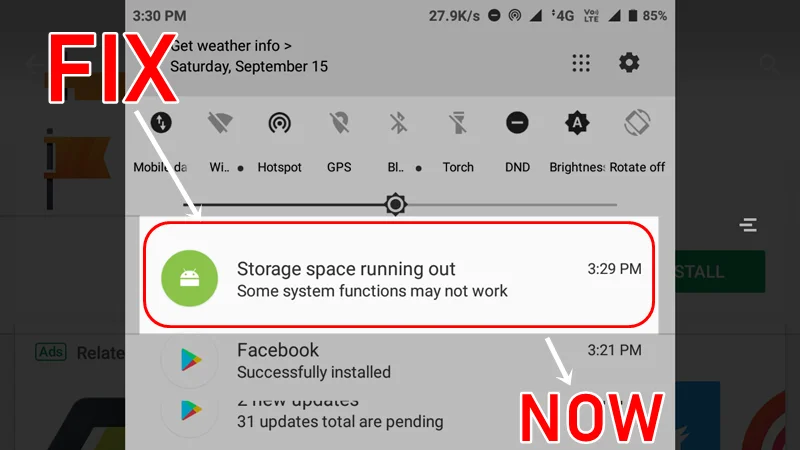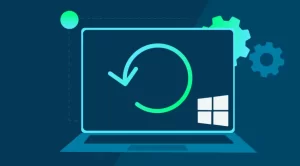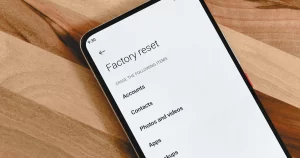App crashes on Android can be frustrating, especially when they seem to happen out of nowhere. One often-overlooked cause is low storage space. As your device runs out of room, apps may behave unpredictably—freezing, crashing, or refusing to start at all. Even core system functions like app updates, background sync, or the camera can fail when storage hits critical levels.
This guide breaks down how low storage leads to app instability and walks you through practical, effective steps to fix and prevent app crashes caused by insufficient space on Android devices.
Why Low Storage Causes Apps to Crash
Modern Android apps rely on free disk space not just for storing data but also for background processing, caching, and system operations like logging or unpacking temporary files. When available space falls below a certain threshold, the OS starts to restrict background activity and may even prevent certain apps from functioning properly.
Common Crash Triggers Related to Low Storage:
| Trigger | What Happens |
|---|---|
| App unable to cache or write data | Causes exceptions or write errors that crash the app |
| OS prevents background operations | Sync failures or media handling errors that force-close the app |
| Updates or install attempts fail | Apps become stuck in a broken state, unable to relaunch or update |
| Temporary files can’t be created | Apps that rely on temp directories (e.g., video editors, messengers) fail |
Step-by-Step: Fixing App Crashes Due to Low Storage
Step 1: Check Available Storage Space
Before anything else, verify how much space is left on your device.
How to Check Storage:
- Go to Settings > Storage (or Device Care > Storage on Samsung).
- Look for Available space.
If you’re under 1GB of free space, you’re likely in the danger zone—especially if you’re using heavier apps like games, editing tools, or messaging platforms.
Step 2: Clear App Cache (Not Data)
Start by clearing the cache for apps that are using large amounts of space. This can resolve crashes without deleting personal data.
How to Clear Cache:
- Go to Settings > Apps.
- Tap on the problematic app.
- Select Storage & cache.
- Tap Clear cache.
You can also use tools like Files by Google to clear cache across multiple apps quickly.
Step 3: Delete Unused Apps
Unused apps take up space unnecessarily—especially large games or media apps with offline content.
Steps:
- Visit Settings > Apps > Sort by size.
- Uninstall apps you haven’t opened in weeks.
- Pay special attention to games, video editors, and legacy apps that are no longer updated.
Step 4: Move Media Files to Cloud or External Storage
Photos, videos, and downloads are often the biggest culprits when it comes to storage bloat.
| Solution | How to Do It |
|---|---|
| Use Google Photos | Back up photos, then delete originals using the “Free up space” option. |
| Cloud Storage Apps | Use Google Drive, Dropbox, or OneDrive to offload documents and media. |
| External Storage | If your device supports microSD cards, move files there to free up internal storage. |
Step 5: Clear Downloads and Other Junk Files
Downloaded files and leftover APKs accumulate over time. These aren’t essential and can be safely deleted.
Tools You Can Use:
| Tool | Function |
|---|---|
| Files by Google | Cleans junk, duplicate files, and cache |
| SD Maid (advanced users) | Deeper scan of hidden and system files |
| Built-in Storage Manager | Available on many newer Android devices |
Step 6: Offload or Archive Infrequently Used Apps
Some manufacturers offer app offloading, which removes the app but keeps its data for future reinstallation.
On Samsung (One UI):
- Long-press an app > Uninstall or Offload.
For other devices, you may need a third-party launcher or file manager to perform this.
Step 7: Force App Updates After Freeing Space
If the app that’s crashing is stuck in an outdated or broken state due to interrupted updates, try forcing a clean update:
- Free at least 1.5–2GB of space.
- Go to Google Play Store > My apps & games > Update all.
- If the update fails, uninstall the app, restart your phone, and reinstall it fresh.
Step 8: Use Lite Versions or Alternatives
For devices with chronic low storage, consider lighter versions of popular apps.
| Standard App | Lite Alternative |
|---|---|
| Facebook Lite | |
| Google Maps | Maps Go |
| YouTube | YouTube Go (where available) |
| Microsoft Outlook | Outlook Lite |
These alternatives use less storage and are optimized for low-resource environments.
Step 9: Check If System Partition Is Full
In rare cases, the /system partition may be full, especially on heavily modified or older devices. This typically requires:
- Root access
- System cleanup using apps like Link2SD or Titanium Backup
- Or a full factory reset
Only attempt this if you’re familiar with advanced Android operations, as incorrect handling can brick your device.
Step 10: Enable Storage Monitoring Going Forward
To prevent crashes from happening again, enable storage alerts and automatic cleanups.
On Android 11 and later:
- Go to Settings > Storage > Storage Manager.
- Toggle Smart Storage or equivalent feature to auto-delete backed-up media.
Additionally, set monthly reminders to review large files, unused apps, and downloads.
Quick Fix Table
| Problem | Fix |
|---|---|
| App crashes when opening | Clear app cache, free at least 1GB space |
| App won’t update or reinstall | Uninstall, clear more space, restart, retry |
| Device very slow or freezing | Delete large files, remove background apps |
| Crashes only on photo/video apps | Move media to cloud, reduce app storage use |
Final Thoughts
Low storage isn’t just an inconvenience—it’s a performance killer. Apps on Android rely heavily on background processes, temp files, and cached data to run smoothly. When the OS doesn’t have room to breathe, apps will crash, freeze, or refuse to work altogether.
By following the steps in this guide—clearing caches, managing media, removing redundant apps, and monitoring usage—you’ll not only stop crashes but improve the overall health and responsiveness of your Android device.
And remember: always keep at least 1.5GB to 2GB free to allow Android’s system and your apps to run without hiccups. When in doubt, clean it out.



